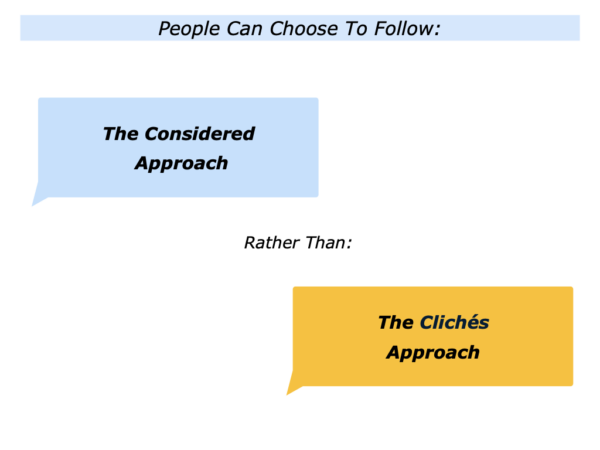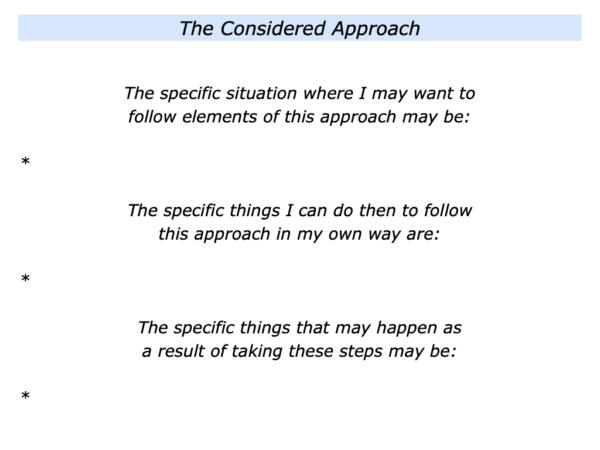
There are many ways to make sense of life and make decisions. Some people aim to follow the considered approach rather than the cut and paste clichés approach.
People who follow the first approach aim to be considered, clear and sometimes even creative. They take this approach when making sense of experiences, communicating with other people or aiming to do good work.
People who follow the second approach may respond quickly to issues by using a list of clichés or sound bites. They may or may not have a full understanding of a situation.
People who follow the considered approach may also communicate in a compelling way. They may do this by giving a full view of the situation, however, and then bringing it to life with real examples. Let’s look at these different approaches.
The Considered Approach
People who take this approach may sometimes appear to be sages. They tend to see themselves as lifetime students, however, who still have a lot to learn.
They make decisions in a considered way. They gather information, clarify the goals to achieve and explore the possible options going forwards. When appropriate, they pursue the option most likely to achieve success.
Such people see themselves as small in the great sweep of history. They may study some topics in depth and see the big picture. They also see patterns and how things are connected.
They study what works, test what works and share what works. They may also find creative solutions to challenges. When appropriate, they may pass on this knowledge to help people to achieve their goals.
Some people who take this approach are good at communicating with certain kinds of people. They move from explaining the concept to giving concrete examples that bring the ideas to life.
Such people often have strong beliefs but they try to remain humble. They recognise that there are many ways to live life. They therefore try to pass on ideas in a considered way that respects other people.
The Clichés Approach
People who take this approach sometimes talk in cut and paste clichés. They may have heard a sound bite or a slogan they like. They may then apply it without fully understanding the complexities of a situation.
Some politicians follow this approach. They may be continually in campaign mode. They may not know how to coordinate things in real life, however, or deliver the desired concrete results.
They may simply repeat slogans without substance. When asked to give a real life example, or be confronted by one, they resort to repeating the slogan or try to bluster their way through.
Some individuals aspire to be what they call ‘the smartest person in the room’ by repeating sound bites from the latest article they have read. They may also use cliches such as ‘thinking outside the box’. They may find it difficult, however, when asked to give a concrete example.
There are times, of course, when there are elements of truth in a cliché – which is why it has become a cliché. It can be important for a person to show they understand the full picture, however, and give evidence about why the cliché applies to that situation.
Let’s return to your own life and work. Looking ahead, can you think of a specific situation where you may want to follow elements of the considered approach? How could you do this in your own way?
If you wish, try tackling the exercise on this theme. This invites you to complete the following sentences.







Leave a Reply